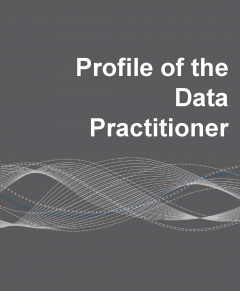By jmalyn-smith on December 12, 2016
 It is no longer news that the use of data-based decision making has reached a critical mass in every industry sector.
It is no longer news that the use of data-based decision making has reached a critical mass in every industry sector.
By kkrumhansl on December 07, 2016
I can feel the energy of the waves gently pushing at my body, the sound of bubbles rising by my ears. I look down at my underwater clipboard and carefully write down “5”; the number of kelp stems, or fronds, that I’ve just counted. I let my tethered pencil go, and it floats up in front of me as a fish swims by. Everything seems to move in slow motion around me. I am relaxed, but focused.
By rKochevar on October 20, 2016
This past weekend I was invited to run a 2 1/2 day workshop for the Community College Undergraduate Research Initiative. CCURI (pronounced “curry”) is an NSF-funded program involving 50 community colleges, and the focus of this workshop was to engage a dozen CCURI professors in developing activities for their students to work with authentic scientific data.
By rkrumhansl on September 13, 2016
What an expert sees in a data visualization is not what a novice sees. This is an important lesson learned from a two-year project undertaken by the Oceans of Data Institute, funded by the National Science Foundation.
By bgranofsky on August 29, 2016
Big data continues to revolutionize almost every discipline. But a key question—how universities can prepare students, researchers and staff with the skills appropriate for success in big data—is largely left unresolved.
These modules were developed to engage undergraduate students with authentic scientific data through investigations that mirror those currently being conducted by scientists studying the broad-scale effects of climate and human activities on top predators in ocean ecosystems. Using the Ocean Tracks interactive map and data analysis tools, students will explore and quantify patterns in the migratory tracks of marine animals in the northern Pacific Ocean and relate these behaviors to fluctuations and trends in physical oceanographic variables.
By pmcdeed on August 05, 2016
The work of a teacher rarely ceases once the doors of the school finally close for summer vacation. Just a few short days after the school year had ended, I had the opportunity to head back to my old high school stomping grounds and reconnect with many of the teachers who were, and in some cases continue to be, my most influential mentors, helping to shape me as a learner and as a person. But this time, instead of turning to former teachers for wisdom, I was suddenly being treated as the “expert” in the room.
These presentation slides were presented at the Ocean Observatories Initiative (OOI) Teaching with Data Workshop on May 20-22, 2016.
By jmueller-northcott on April 27, 2016
“The data shows that my hypothesis was wrong.”
By pmcdeed on April 19, 2016
This past week I had the pleasure of traveling out to Oregon wine country to visit Dayton High School. While Dayton may be a small rural town, big changes were taking place in the classroom. The school is experimenting with a new type of learning model, dubbed Agile Learning, to spark a culture of creative problem solving and collaboration throughout its halls.
Pages